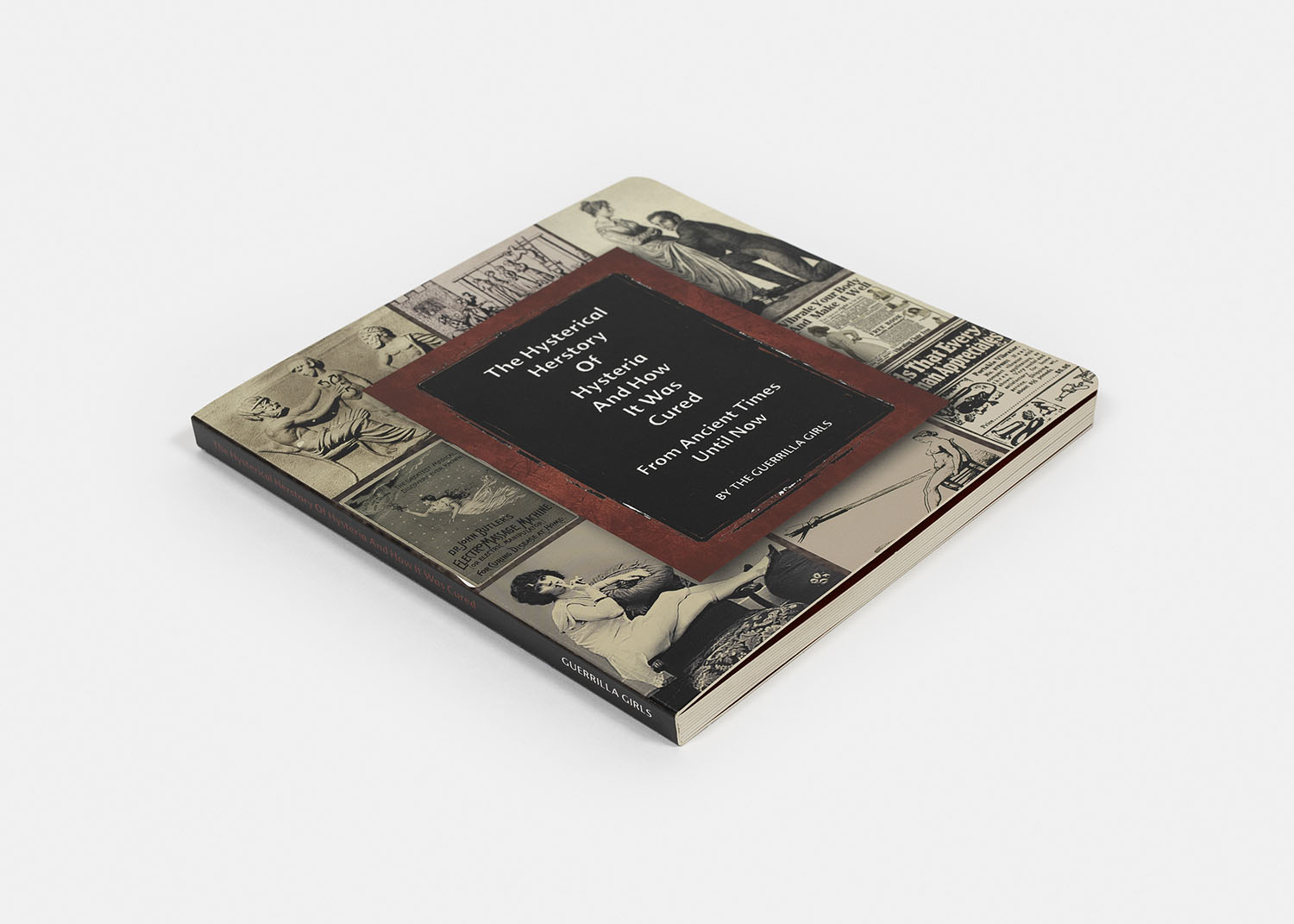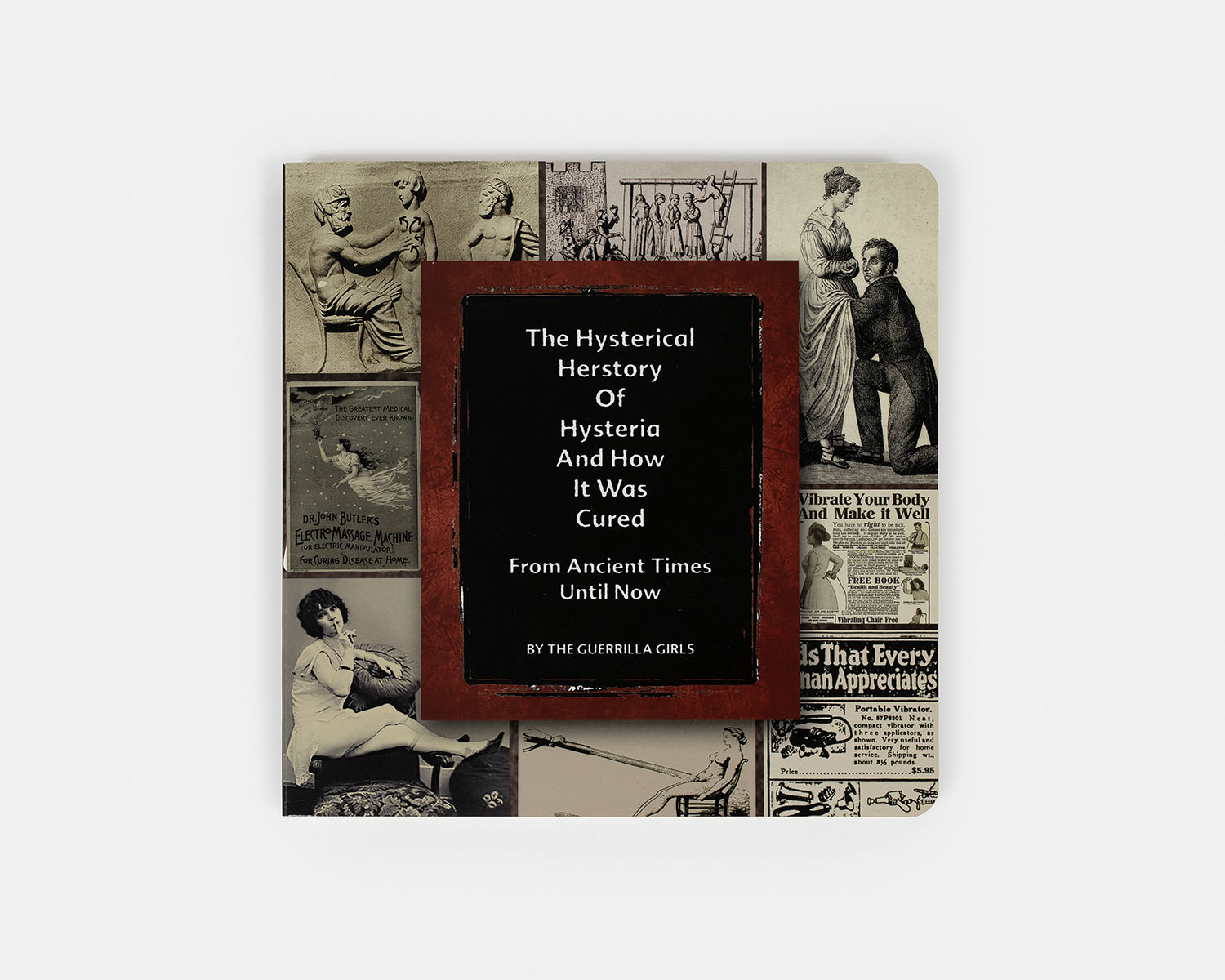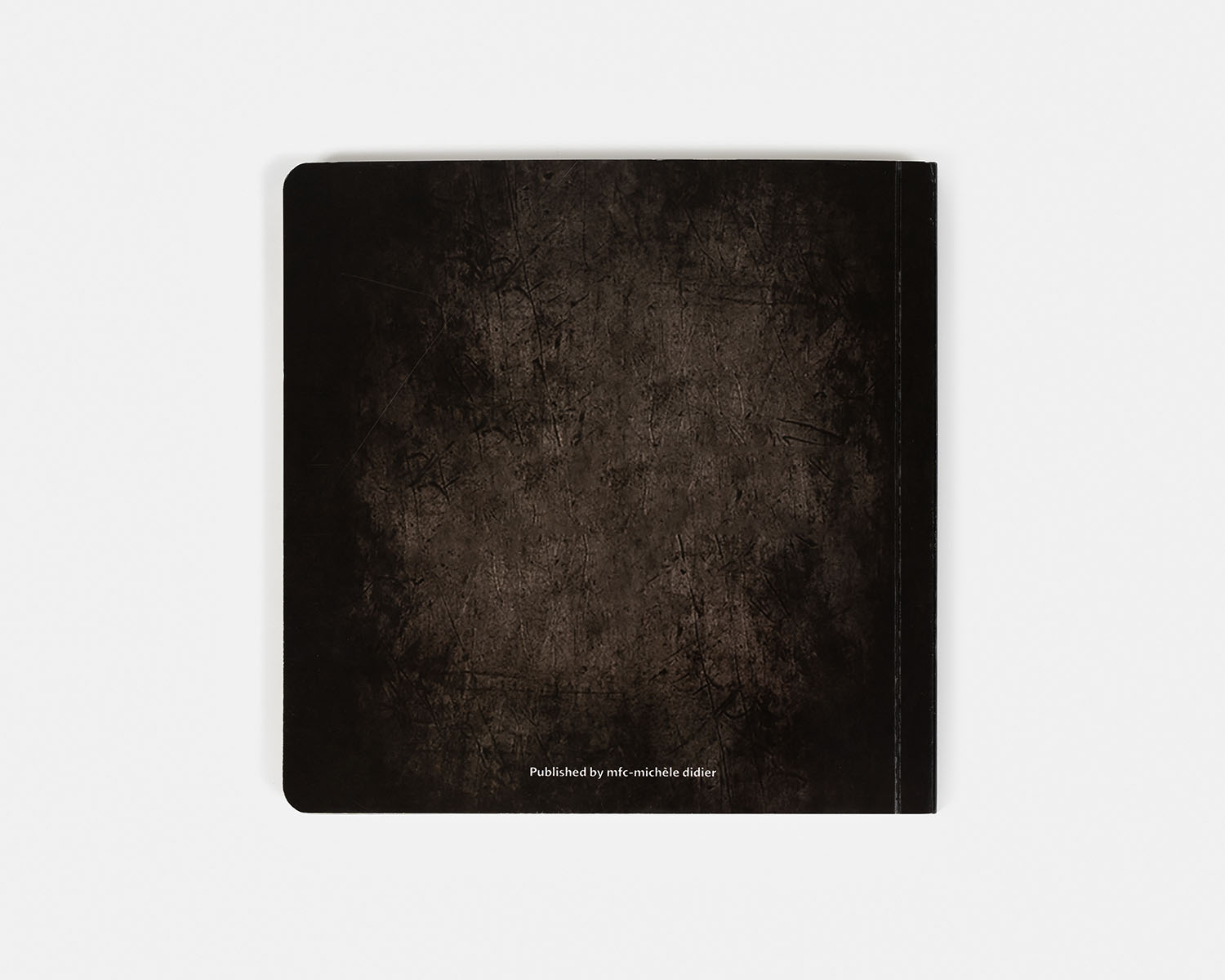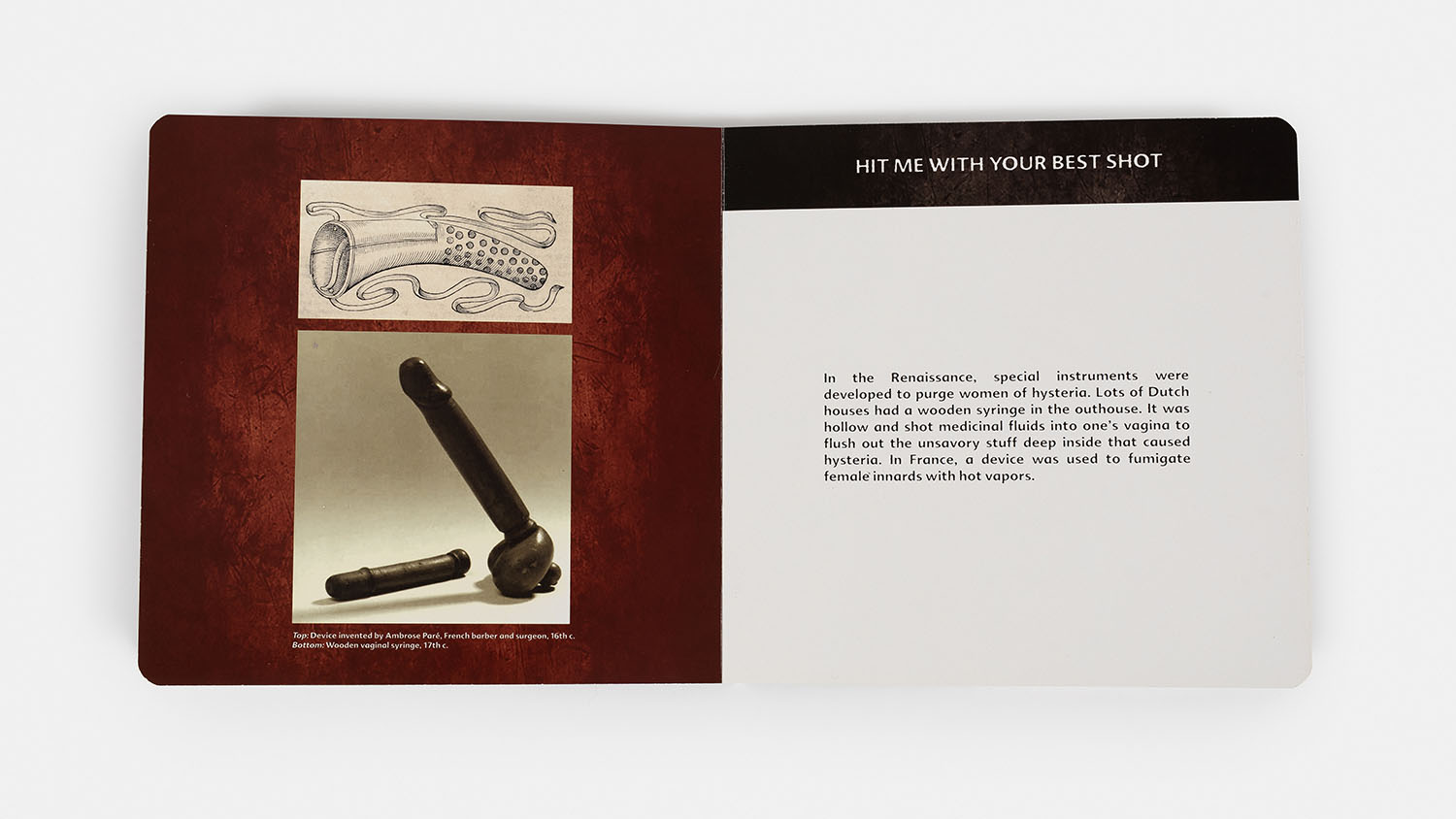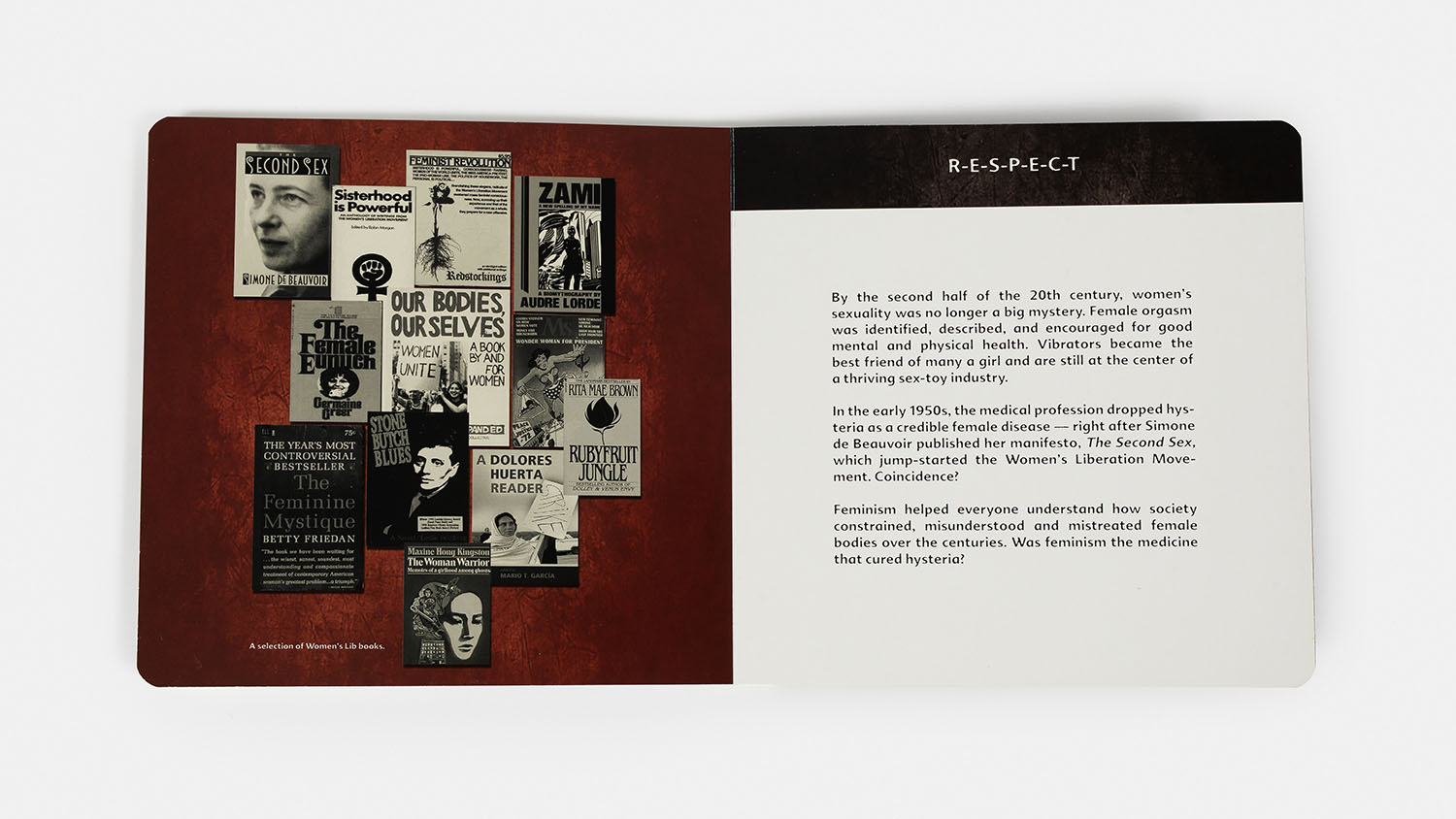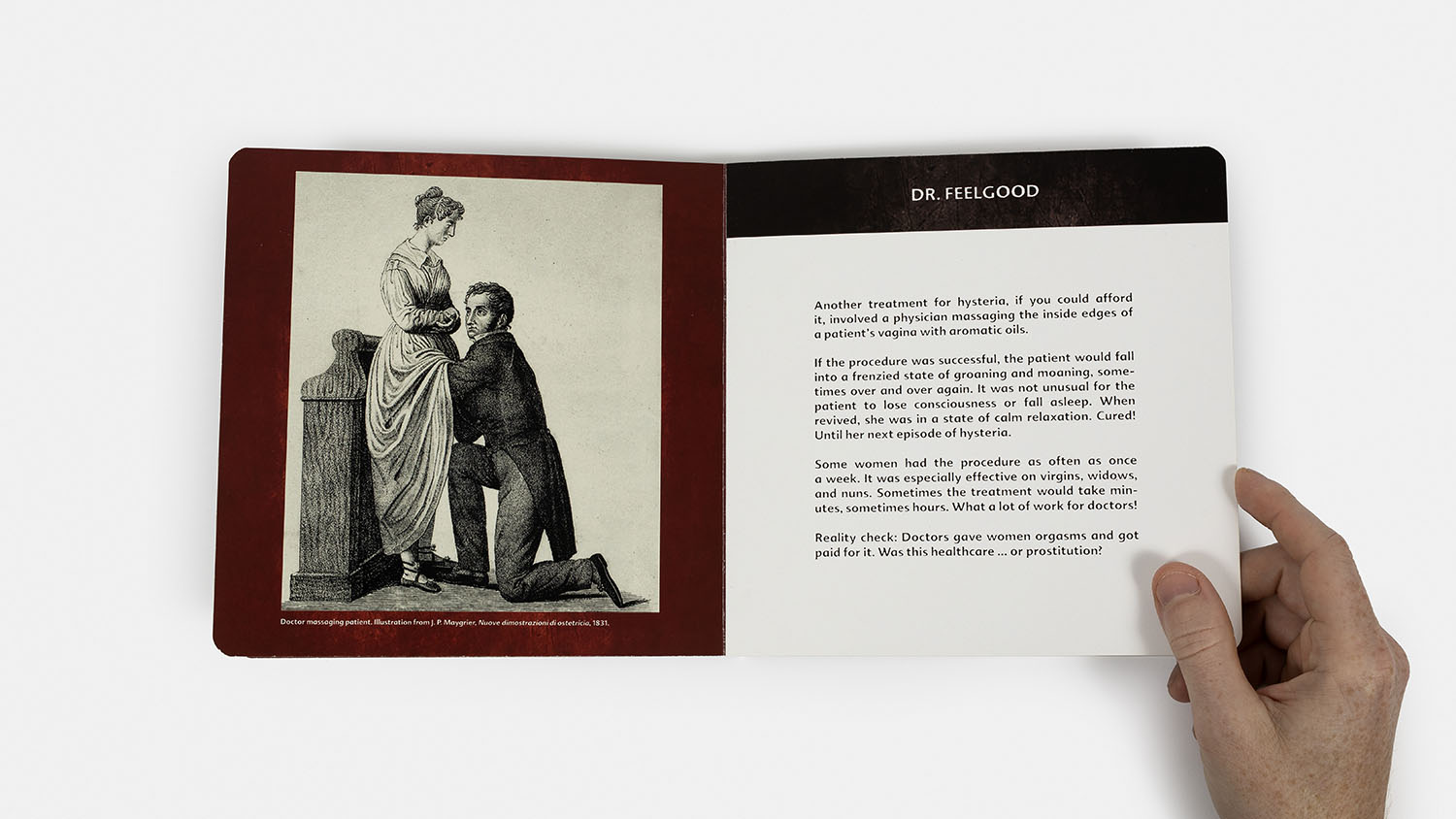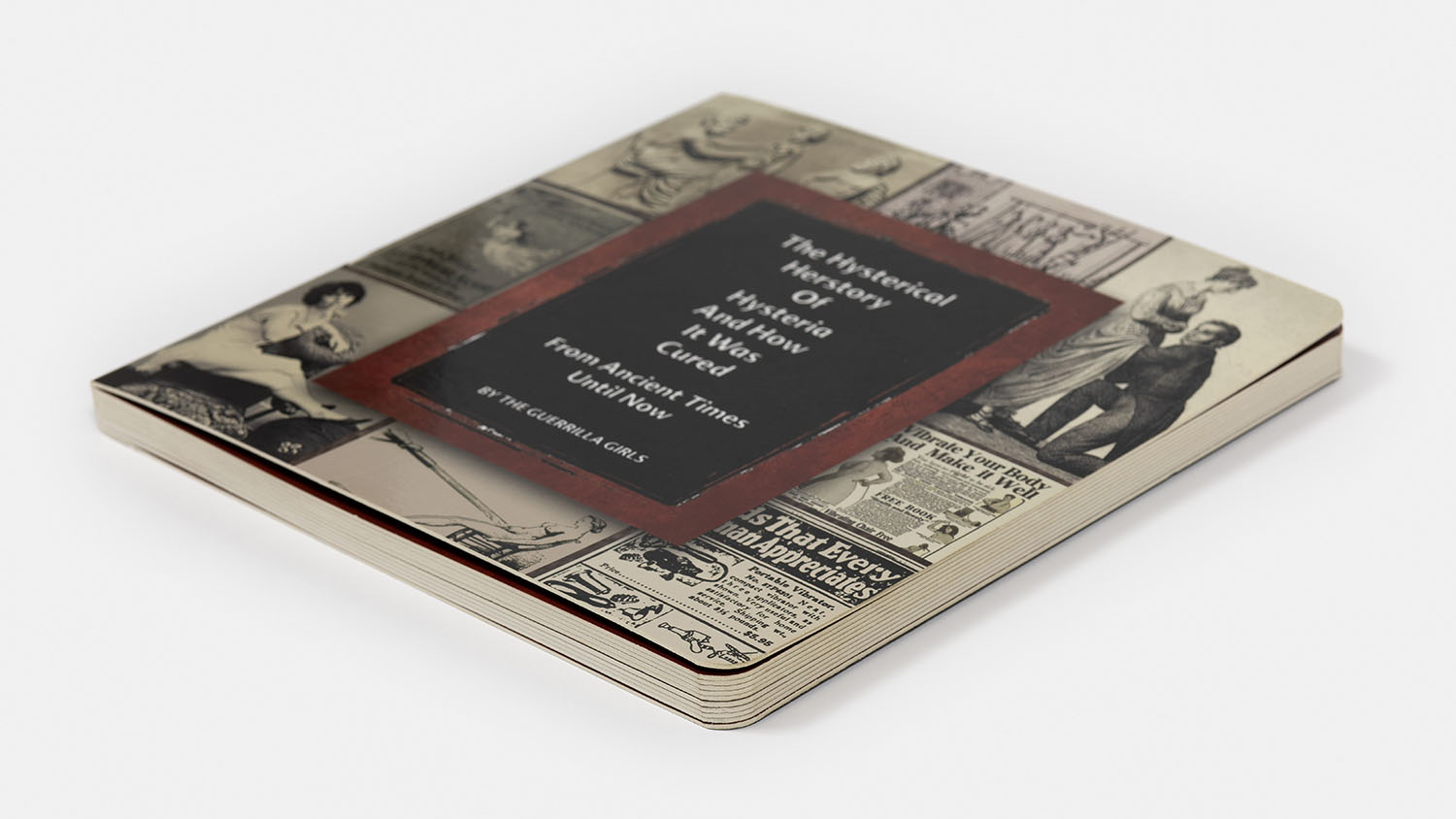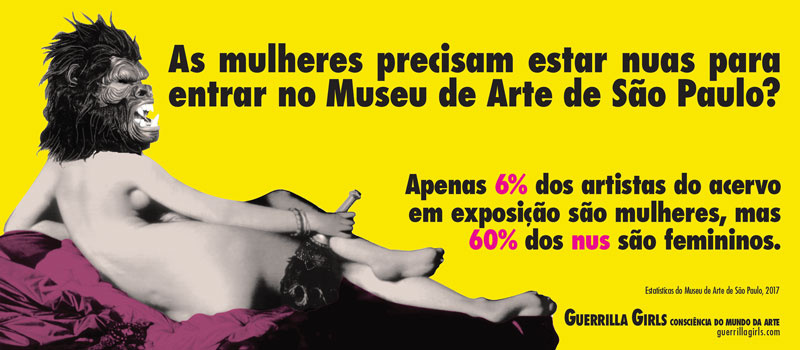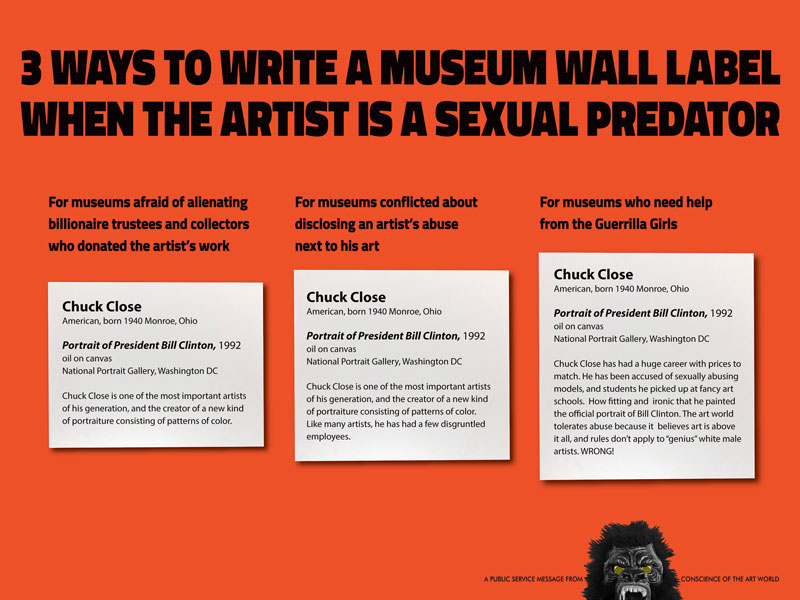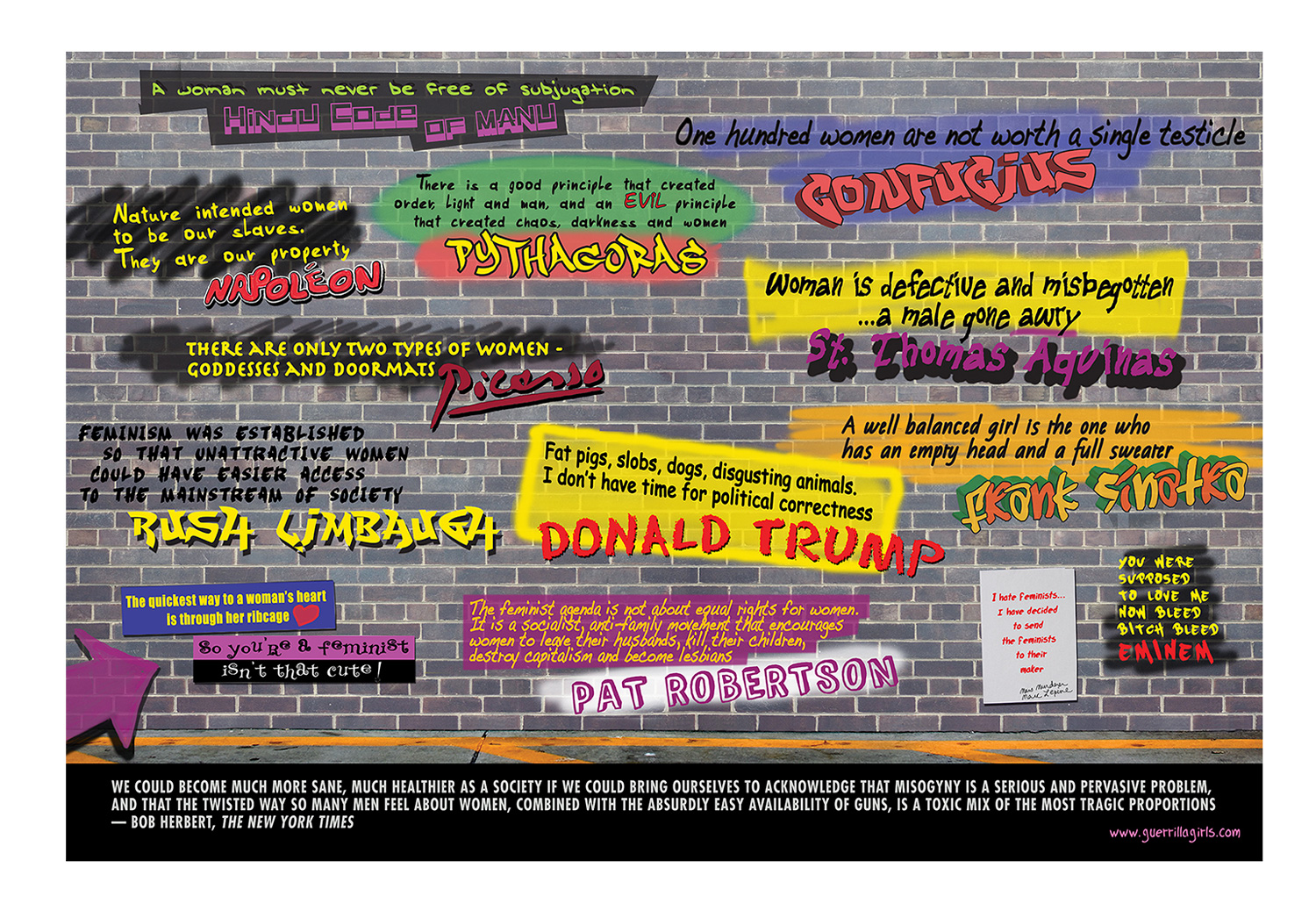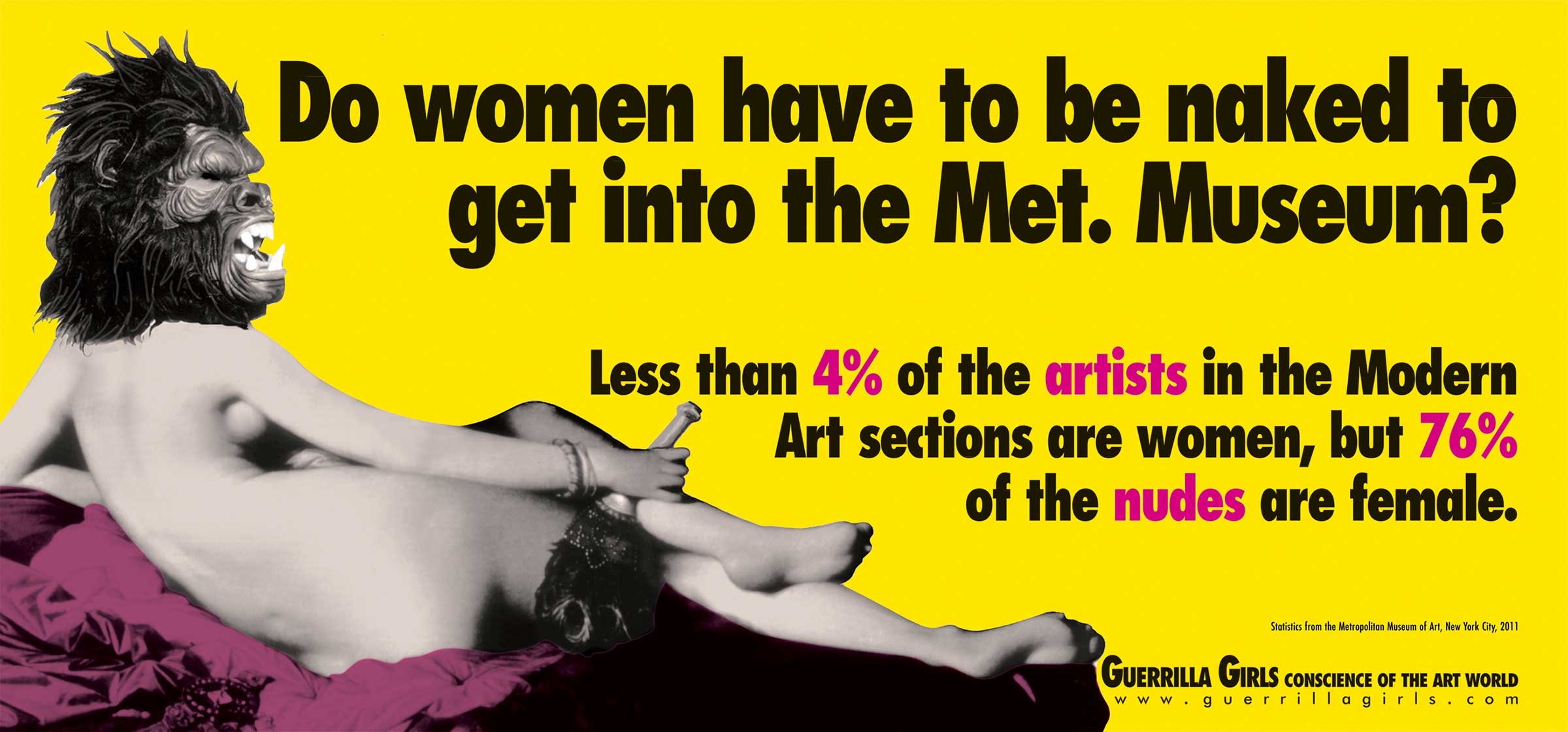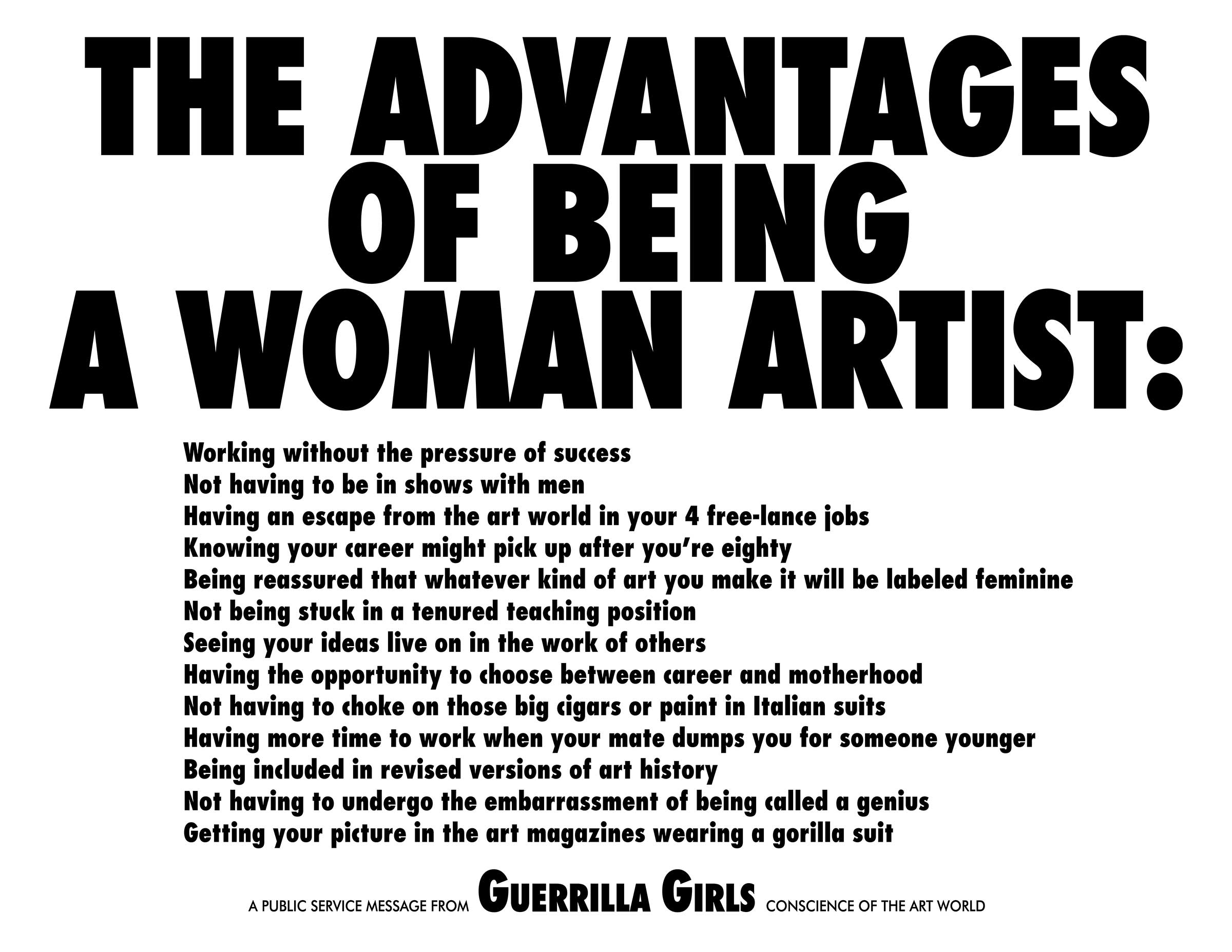Guerrilla Girls The Hysterical Herstory of Hysteria and How it was Cured, From Ancient Times Until Now, 2016
Specifications
Board Book with round corners, 20.3 x 20.3 x 1.2 cm, 22 pages
Paper mounted on cardboard
Production
Edition of 500 copies and 500 artist's proofs
2009/2016
Produced and published by mfc-michèle didier in 2016
©2016 The Guerilla Girls and mfc-michèle didier
NB: All rights reserved. No part of this edition may be reproduced in any form or by any means without written permission of the artists and the publisher.
In 1985, the Guerrilla Girls made a startling observation: of the 169 artists featured in the MoMA exhibition An International Survey of Recent Painting and Sculpture, only a small minority were women or artists of colour. From that moment on the group unceasingly created poster campaigns, handouts, leaflets and other ephemera in the aim of "opening the public eye to the discrimination which reigns within our very phallo- and ethno-centric artistic institutions".
Their printed matter is most often used in the context of actions taking place in public spaces. Pasting up posters in the street and handing out flyers or manifestos allow The Guerrilla Girls to reach a wider audience, but direct contact with the general public also exposes them to confrontation and the risk of violent reactions from opponents who wish to silence them.
Keeping in mind their will to communicate with the masses, these "Bad Girls" employ simple yet striking visual codes. Their texts are as succinct and incisive as advertising slogans and are systematically typeset in capital letters and bold or ultra-bold fonts. The posters are printed in flashy colours and one can clearly observe a penchant for girly pinks, yellow, red and black. Images are directly plundered from archetypal scenes of art history and radically set against monochrome backgrounds by means of brash digital cutouts, free of any secondary and superfluous information.
The group clever use of iconography is epitomized in the figure of the gorilla, a mask of which members don before each intervention. After all, there is just a hair's breadth between "guerrilla" and "gorilla".
The mask acts both as signature and disguise, allowing The Guerrilla Girls to hide their true identities while riffing on well-known gender-normative superheroes whom we need not name. The Guerrilla Girls' first intention is to save the art world from its prime enemies: sexism and racism. The mask provides a place for anonymity in their struggle. It hides each member's identity and therefore protects him or her from any consequences that might be detrimental to their careers as artists or to their private lives. But if it is to be considered as an accessory or an element of camouflage, the mask can also become comical or ironic.
Choosing a primate as your emblem is of course far from anodyne. While monkeys are often considered comical due to their mimetic nature, the gorilla comes across as menacing or threatening and potentially aggressive. The long, sharp incisors of the Guerrilla Girls' masks clearly illustrate this point. And so we are in agreement: their opinion must be heard.
Once again, of course, it's the mask that allows this amazing feat. The listener's attention is concentrated on the words spoken and not on the identity of he/she speaking. The content we see or rather read on the Guerrilla Girls' posters and handouts is not relegated to a position of secondary importance behind an individual's identity. Discourse prevails here.
A new Guerrilla Girls publication entitled The Hysterical Herstory of Hysteria and How It Was Cured, produced and published by mfc-michèle didier is added to the printed ephemera.
This edition takes the form of a "board book"; its thick pages remind us of children's educational volumes while offering a didactic and satirical reading of the history of a neurosis considered to affect only the fair sex.
20.47 x 28.35 in ( 52 x 72 cm )
22.83 x 29.53 in ( 58 x 75 cm )
55.12 x 78.74 in ( 140 x 200 cm )
11.81 x 25.59 in ( 30,3 x 65,6 cm )
11.81 x 25.59 in ( 30,3 x 65,6 cm )
16.93 x 22.05 in ( 43 x 56 cm )
